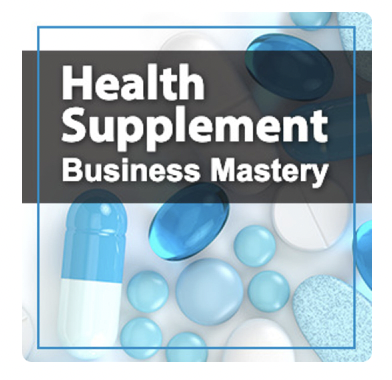In the competitive landscape of the supplement industry, pricing strategy represents one of the most powerful yet nuanced tools available to brand owners. The decisions you make about both everyday pricing and promotional cadence directly impact not just short-term revenue but long-term brand positioning, customer perception, and business sustainability. Finding the optimal balance requires a deep understanding of supplement market dynamics and customer psychology.
The Supplement Pricing Paradox
Supplement pricing exists in a unique territory where consumer expectations, perceived value, and actual production costs create complex interactions. Unlike commodity products where price sensitivity is straightforward, supplements occupy a space where higher prices can sometimes increase perceived efficacy rather than deter purchases.
You spent all this time making the best product and it costs you $8 a bottle, not $2.50, but guess what? You sell the pants off of everybody else two years later. This insight reveals a fundamental truth: in the supplement industry, price often serves as a quality signal that influences purchase decisions beyond simple economics.
This creates what might be called the supplement pricing paradox, the need to balance profit margins against the reality that pricing too low can harm sales by reducing perceived efficacy. Consumers often instinctively question the potency and quality of suspiciously inexpensive supplements, creating a price floor that may sit above production costs for quality products.
The psychological impact of price positioning becomes particularly important in health products where efficacy concerns outweigh simple cost considerations for many consumers. A supplement promising significant health benefits at a price point that seems too good to be true often triggers skepticism rather than excitement.
Establishing value perception through pricing architecture requires careful calibration. The most successful supplement brands create multi-tiered pricing that signals quality while providing options for different customer segments. This might include good-better-best product lines, different size options, or subscription tiers that create natural price differentiation without confusing customers.
Everyday Pricing Fundamentals for Supplement Brands
Developing a sustainable pricing foundation begins with understanding true costs beyond simple manufacturing expenses.
Quality-focused brands must build these premium ingredient costs into their pricing structure while maintaining competitive positioning.
This often requires educating customers about formulation differences rather than competing on price alone.
Cost-plus pricing (adding a standard margin to production costs) provides a starting point but typically fails to capture the full value of premium formulations.
Value-based pricing, which considers the perceived benefit to customers rather than just production costs, generally creates more sustainable models for quality supplements.
Competitor benchmarking plays an important role in base price determination but requires nuanced analysis. This approach requires identifying true competitive peers rather than simply matching the lowest prices in the category.
The Strategic Role of Promotional Calendars
Strategic promotions create sales velocity that can justify higher everyday pricing. Rather than constant discounting, which trains customers to wait for sales, successful supplement brands implement structured promotional calendars with clear patterns and major events.
The six-week promotion cycle emerges as a common approach among established supplement brands. This timeframe balances promotional freshness against margin protection, creating anticipation without excessive frequency.
Major promotional events anchor the annual calendar. Of course we do Black Friday, Cyber Monday, Prime Day. These industry-wide shopping events create natural opportunities for deeper discounts without signaling desperation.
Seasonal opportunities specific to supplement categories create additional promotional touchpoints. Weight loss products naturally align with New Year’s resolutions and pre-summer preparation. Immune support sells best during fall and winter months. Sports performance peaks during traditional training seasons. Aligning promotional cadence with these natural demand patterns amplifies effectiveness.
Setting promotional budgets requires balancing short-term revenue goals against long-term brand positioning. Excessive discounting damages perceived value and trains customers to wait for sales. Insufficient promotion misses revenue opportunities and limits new customer acquisition. Most successful supplement brands allocate 10-15% of annual revenue to promotional discounts, with careful tracking of post-promotion full-price purchase behavior.
Subscription Models as Pricing Stabilizers
Subscription programs create pricing stability that counterbalances promotional volatility. By offering consistent value to loyal customers, subscriptions maintain revenue predictability while allowing for occasional deeper discounts to acquire new customers.
Discount levels for subscriptions require careful calibration. Too small, and customers see insufficient incentive to commit. Too large, and the program damages overall margins while potentially cannibalizing full-price sales. Most successful supplement subscriptions offer 10-15% discounts on products plus free or reduced shipping, creating meaningful savings that still preserve healthy unit economics.
The relationship between subscription pricing and customer lifetime value creates a powerful economic engine when properly managed. What you’re really talking about is more of a lifetime value of the customer really, and keeping them for the journey of their health. Subscriptions significantly increase average customer tenure, often extending lifetime value by 200-300% compared to one-time purchasers.
The balance between one-time purchases and subscription options requires thoughtful product selection and positioning. Not all supplements make sense as subscriptions, acute need products often perform better as one-time purchases, while maintenance supplements naturally fit subscription models. Offering both options with appropriate incentives allows customers to self-select into their preferred purchasing pattern.
Subscription-exclusive offerings provide another strategic lever for enhancing perceived value without discounting. Special sizes, limited formulations, or companion products available only to subscribers create membership benefits that justify commitment without relying solely on price reduction.
Supersizing Strategy: The Alternative to Constant Discounting
The supersizing approach represents one of the most powerful pricing strategies available to supplement brands. Rather than discounting existing products, offering larger package sizes allows for volume-based savings while maintaining or even increasing margins.
Once you’ve developed a product and people like it and they’re buying it and it becomes popular and you have a month’s supply bottle, then you make it in a two-month supply bottle. The shipping might go up 20, 30 cents, but the overall price goes up significantly and the profit margin. Your cost of warehousing hardly goes up because there’s hardly a difference between this size bottle and that size bottle, right? Not much, but one can be two month or three supply and one’s a one month supply.
The psychology of per-serving pricing creates powerful value perception when properly communicated. A 30-day supply at $39.95 ($1.33 per day) compared to a 90-day supply at $99.95 ($1.11 per day) presents obvious savings while maintaining premium positioning. This approach resonates particularly well with committed users who recognize both the convenience and economic advantages of larger purchases.
The most effective approach creates meaningful but not excessive savings for larger sizes, typically 15-20% per-serving discount for the largest size compared to the smallest. This provides sufficient incentive to upgrade without devaluing the base product or creating excessive price sensitivity.
The financial impact of supersizing extends beyond direct margin improvements to include reduced fulfillment costs (one larger order versus multiple smaller orders), decreased customer acquisition expenses (less frequent repurchase requirements), and improved cash flow (more revenue captured in each transaction). These secondary benefits often outweigh the direct pricing advantages.
Multi-Product Bundling Strategies
Bundle strategies create another avenue for providing customer value without undermining individual product pricing. By combining complementary products into systems or stacks, brands can increase average order value while enhancing perceived value through solution-oriented positioning.
This approach creates natural product pathways that guide customers through a brand’s ecosystem rather than treating each product as an isolated purchase decision.
Product complementarity provides the strongest foundation for effective bundling. Weight loss supplements paired with digestive support, protein powder bundled with pre-workout formulas, or sleep aids combined with stress management products create logical combinations that address related needs. These natural pairings feel helpful rather than simply promotional.
Bundle pricing requires balancing meaningful savings against margin protection. Most successful bundles offer 10-25% savings compared to purchasing individual products separately. This discount range provides sufficient incentive to increase order size without creating the perception that individual products are overpriced.
Education plays a crucial role in supporting bundle strategies. By explaining how products work together synergistically, brands can justify bundle pricing based on enhanced effectiveness rather than simple cost savings. This approach maintains premium positioning while providing tangible customer value.
Customer Segmentation and Personalized Pricing
Different customer segments display vastly different price sensitivity and purchasing patterns in the supplement industry. The people who buy essential oils are a completely different crowd than people who buy performance supplements, who are a completely different crowd than people who are into nootropics, who are completely different than the longevity crowd.
These differences create opportunities for segment-specific pricing strategies. Sports performance customers often prioritize efficacy over price and respond well to premium positioning. Weight loss customers frequently display more price sensitivity but also respond strongly to perceived value. Understanding these segment-specific dynamics allows for tailored pricing approaches.
Acquisition versus retention pricing creates another strategic dimension. New customer promotions can offer deeper discounts to overcome initial purchase barriers, while loyalty pricing rewards continued engagement without excessive discounting.
VIP and high-value customer programs provide opportunities for personalized pricing that rewards the most valuable buyers without broadly discounting. Early access to new products, exclusive formulations, or enhanced service levels creates perceived value beyond simple price reductions. These approaches preserve overall pricing integrity while still providing meaningful benefits to key customers.
Balancing personalization against operational simplicity requires thoughtful systems and processes. Excessive complexity in pricing structures creates fulfillment challenges, customer confusion, and management headaches. The most effective approaches identify 3-5 key customer segments with meaningfully different needs and develop specific strategies for each rather than attempting infinite personalization.
Promotional Tactics That Preserve Brand Value
Not all promotions impact brand positioning equally. Certain promotional tactics provide value to customers while maintaining price integrity and premium positioning. These approaches create sales velocity without training customers to expect ongoing discounts.
Free shipping thresholds represent one of the most effective promotional tools for supplement brands. Rather than directly discounting products, many successful promotions focus on shipping incentives that encourage larger orders without reducing product value perception.
Gift with purchase offers provide another avenue for adding value without direct discounting. Including sample sizes of complementary products, branded accessories, or educational materials creates purchase incentives that enhance the customer experience rather than simply reducing price. This approach often introduces customers to additional products they might not otherwise try.
Limited-time additions and exclusive formulations create urgency without price reductions. Seasonal formulations, enhanced versions, or special editions generate interest and purchase motivation while potentially commanding premium pricing rather than discounts. This approach works particularly well for established products with loyal customer bases.
Early access and priority purchasing opportunities reward loyal customers without discounting. Allowing subscribers or VIP customers first access to new products or limited inventory creates perceived value and purchase motivation without margin reduction. This strategy also provides valuable early feedback from the most engaged customers.
Referral incentives expand the customer base while maintaining price integrity. The number one funnel is that you bought this product and you took it for three weeks and you loved it and you told your friend. That’s the best funnel. Formalizing this natural process through referral rewards creates acquisition opportunities without broad discounting.
Channel-Specific Pricing Considerations
Most supplement brands sell through multiple channels, each with distinct pricing dynamics and requirements. Creating coherent cross-channel pricing requires understanding platform-specific economics while maintaining brand consistency.
Amazon’s unique ecosystem creates specific pricing challenges. With its algorithm favoring competitive pricing and its customers often comparison shopping, maintaining premium positioning on Amazon requires strong differentiation. 80% of supplements are sold on Amazon in this country right now. And so you just can’t hope because here’s what happens. If you develop a really great brand and then you’re not on Amazon, all of your advertising, the people go, ‘Oh, that’s a really great idea.’ Now they go to Amazon and look for it.
Direct sales through branded websites typically support higher margins but require customer acquisition investment. Many brands position their direct channel as the premium experience with exclusive offerings, enhanced service, or membership benefits that justify potentially higher pricing compared to marketplace platforms.
Wholesale channels introduce another pricing tier with distinct requirements. Retail partners typically expect 40-50% margins, requiring brands to either accept lower wholesale prices or establish higher MSRPs that accommodate retail margins. Managing this channel without undermining direct sales requires careful positioning and often product differentiation.
Minimum advertised price (MAP) policies help maintain pricing consistency across channels when properly implemented and enforced. These policies establish floor prices below which resellers agree not to advertise products, creating pricing stability that protects margins and brand positioning. Enforcement requires consistent monitoring and sometimes difficult conversations with non-compliant sellers.
Channel-exclusive products provide another tool for managing cross-channel pricing dynamics. By creating slightly different formulations, sizes, or packaging for different channels, brands can maintain distinct pricing tiers without direct comparison. This approach works particularly well when the differentiation offers genuine channel-appropriate benefits rather than simply enabling price variation.
Metrics for Evaluating Pricing and Promotion Effectiveness
Effective pricing optimization requires looking beyond simple revenue metrics to understand the full impact of pricing decisions on business health. Several key metrics provide deeper insight into pricing effectiveness.
Beyond immediate revenue, contribution margin analysis reveals how pricing decisions affect profitability after accounting for variable costs. This perspective sometimes reveals that higher-volume lower-price approaches reduce overall profitability despite increasing top-line revenue.
Customer acquisition cost implications of different pricing strategies create another analytical dimension. Lower introductory pricing might increase conversion rates but require higher marketing investment to maintain profitability. Analyzing the relationship between pricing and acquisition economics helps identify sustainable approaches.
Lifetime value correlation with initial purchase pricing often reveals counterintuitive patterns. In many supplement categories, customers acquired through deeper discounts show lower retention rates and lifetime value than those who purchase at prices closer to standard rates. This pattern suggests that excessive discounting may attract less valuable customer segments.
Retention metrics associated with different pricing approaches provide perhaps the most important long-term indicator of pricing effectiveness. Even more important than the lifetime value of the customer is the actual physical success of the customer. Those two are related of course, but focusing on LTV is a different process. It’s a different thing than focusing on people. This perspective recognizes that pricing strategies that enable customers to experience product benefits create sustainable value beyond immediate transaction metrics.
Post-promotion behavior analysis reveals whether promotions create lasting customer relationships or simply shift purchase timing. The most effective promotions acquire customers who continue purchasing at regular prices, while less effective approaches primarily appeal to deal-seekers who disappear until the next discount opportunity.
Adapting Pricing Strategy Through Business Growth Stages
Pricing strategy should evolve with business maturity, adapting to changing market positions and business requirements. What works during launch often differs significantly from optimal approaches during growth or maturity phases.
Launch phase pricing typically prioritizes establishing market position over maximizing margins. During this period, pricing should reflect the brand’s intended long-term positioning while potentially offering introductory incentives that encourage trial without establishing unsustainable expectations.
Growth phase promotional patterns focus on building momentum through strategic discounting that acquires customers while maintaining margin integrity.
Maturity phase price optimization shifts focus toward profitability and customer retention rather than acquisition. During this stage, more sophisticated approaches like dynamic pricing, personalized offers, and loyalty based incentives often replace broader promotional strategies.
The business stage also affects the balance between cash flow and margin needs. Early stage businesses often require faster cash conversion, sometimes justifying lower margins to accelerate inventory turnover. Established businesses with stronger cash positions can prioritize margin optimization over turnover velocity.
Competitive landscape changes also necessitate pricing strategy evolution. As markets mature and quality standards increase, pricing strategies must adapt to reflect changing competitive dynamics and customer expectations.
Communication Frameworks for Price and Promotion
How brands communicate about pricing significantly impacts customer perception and purchase behavior. Effective messaging frames pricing in terms of value delivered rather than simply cost, creating a context that supports premium positioning.
Value based messaging emphasizes product benefits relative to price rather than focusing on absolute cost. When you make that shift to genuinely trying to improve your customers’ life, then all that other stuff follows. This perspective shifts pricing conversations from cost comparison to value delivery.
Promotion announcements require particularly careful framing to maintain brand integrity. Limited-time offers based on specific occasions, inventory considerations, or special opportunities create urgency without suggesting that standard pricing is inflated. This approach preserves the effectiveness of promotional pricing while protecting everyday price perception.
Educational content plays a crucial role in justifying premium pricing. By helping customers understand formulation differences, quality standards, and efficacy factors, brands create context that supports value-based purchasing decisions rather than simple price comparison.
Transparency around ingredient sourcing and manufacturing processes further supports premium pricing positions. Explaining why quality ingredients cost more and how they deliver superior results helps customers understand price differences between competing products. This approach is particularly effective when combined with specific examples and tangible quality indicators.
The most sophisticated supplement brands build perceived value through qualitative differentiation rather than competing primarily on price. They emphasize formulation expertise, testing protocols, sourcing standards, and customer results that justify premium positioning. This approach creates sustainable pricing power that supports long-term business health while delivering genuine customer value.
Discover the 3 funnels that can help your health supplement business succeed.

Listen to the Health Supplement Business Mastery Podcast for for dietary supplement entrepreneurs and marketers.



